Todd Hido (pronounced Hie-doe) has a successful commercial photography career, but we won’t be paying any attention to that. He’s been hired by the N.Y. Times to photograph a well-known acting coach who is also a Scientologist, but you’re going to see those shots here. Wired magazine used him to photograph amateur anti-terror hunter Shannon Rossmiller and to illustrate an article on the technology of modern warfare, but you’ll have to go to Wired.com to look at those photographs.
I’m sure all those photos are wonderful, but we aren’t going to bother with them. In this salon we’re going to focus on Hido’s fine art photography.
Hido was born in 1968 in Kent, Ohio, a small college town on the Cuyahoga River. He earned a B.F.A. from Tufts University in Massachusetts and an M.F.A. from the California College of Arts and Crafts in Oakland, California (where he currently resides). But in some ways Hido has never really left his suburban home in small town Ohio.
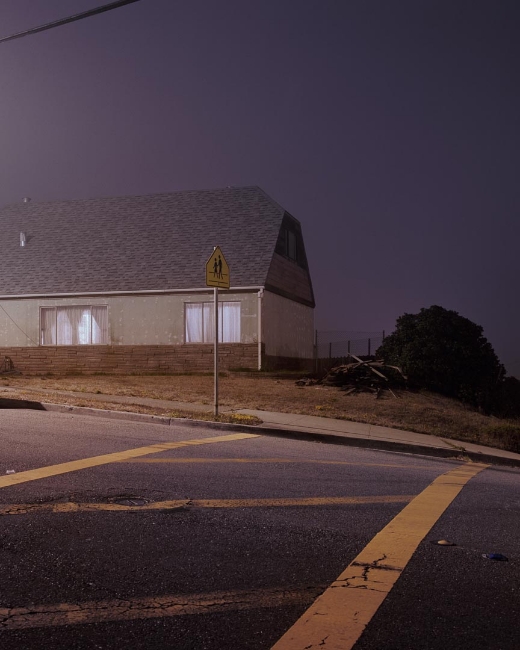
He made his name as a fine arts photographer in 2001 with the publication of his monograph House Hunting. It has been called “a kind of perfect little, big book,” in part because it contains only 26 photographs. Small as it was, it immediately captured the attention of art critics. The photographs show suburban homes by night. They are, in a way, very simple images. Hido simply finds a house he finds visually interesting, sets up his camera, and makes a long exposure (anywhere from four to ten minutes).
So very simple–at least on the surface. In practice, it turns out to be somewhat more complicated. The photography is the easy part; the difficult part is finding the scene to photograph. Hido says he’s sometimes driven around at night for five or more hours, looking for just the right scene, and returning home without having exposed a single negative. In winter he’s been known to fly to a city in the northern U.S. to include snow in the image, spend days driving around snowy suburbs and semi-rural areas, and return to his home in Oakland with only one image he considers worth printing.
By shooting at night Hido removes the visual clues we’re used to seeing, those small indications of suburban normality. What is commonplace in the daytime becomes strange and mysterious–even vaguely threatening or unsettling–at night. Through Hido’s lens, even the most dull tract house in the most dull tract neighborhood starts to look peculiarly isolated, detached from all the other houses, solitary and remote. Mysterious, even.
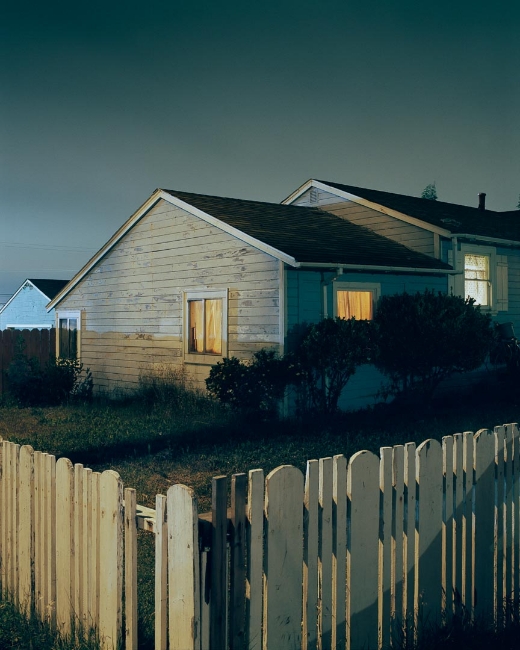
Hido relies exclusively on existing lighting conditions, both exterior and interior. Both are equally important to him on an aesthetic level. The exterior light source, of course, is salient both for the composition (light and shadow) and for its effect on the color balance of the photograph. But the interior light, that’s the light most critical to the effectiveness of the photograph. The interior light hints at the life inside those isolated houses. The interior light reveals the fundamental nature of these suburban homes–of all homes, for that matter. They exist as shelter. They serve to protect people from the elements, from vague outside threats, from other people. There is something primitive suggested by those points of interior light, something not that different from primeval peoples huddled around a fire at night.
Hido initially asked permission to photograph these houses. Not surprisingly, he was universally rejected. A stranger knocking on a suburban door late at night is rarely welcome; it’s generally an indication of some sort of bad news. So he stopped asking.
“I most often go unnoticed, even though I am very careful to not look like I am ‘lurking.’ However, I never ask permission as people would mostly say no.”
Even so, the police have been notified on several occasions, and Hido has learned to avoid setting up on personal property. “After they run me through the system and find I am not a criminal, they leave.“
Over time Hido began to slowly expand his range of interests, although he has generally retained the same aesthetic. He began to photograph suburban and semi-rural landscapes without houses, still at night. Later, he started to shoot the landscapes during the day, primarily from his car, usually in inclement weather.
Once again, Hido found a way to turn the commonplace into something abstract and out of the ordinary. By limiting himself to the confines of his vehicle, Hido assumes a position familiar to anybody who routinely travels in a car. Unlike many people who shoot photographs from their cars, Hido intentionally uses the car as an element of composition. He uses the windows, usually smudged by the weather, to add a layer of separation between the viewer and the viewed. That technique also reprises Hido’s theme of alienation, of being separate and apart from the mundane world.
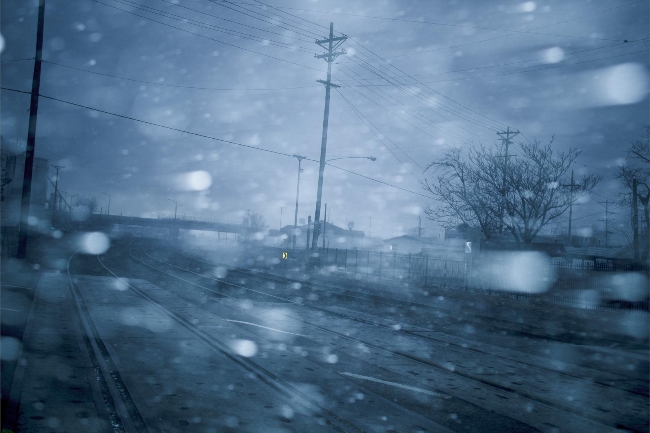
More recently Hido has been shooting fine art portraits. Again, although the venue has shifted, the aesthetic and the theme remain essentially the same. He sets his portrait sessions in old hotels and motels, relying primarily on models he locates via internet modeling agencies.
“When they come to the shoot it’s often the first time we’ve ever spoke or met, as much of this is set up via email. I always shoot alone and fine the discomfort between two strangers works for me. It adds a tension that I like.”
As always, Hido relies on natural light, though he sometimes influences that light by adjusting the curtains or replacing them with material with a different level of translucency. Some settings require more light, some less. The old rooms themselves contribute to the emotional appeal of the final image…the outmoded fixtures, the impersonal furnishings, the ‘used’ ambience. There is something almost contra-nostalgic about these portraits, as if they depict past events we tend to remember as being better than they really were.
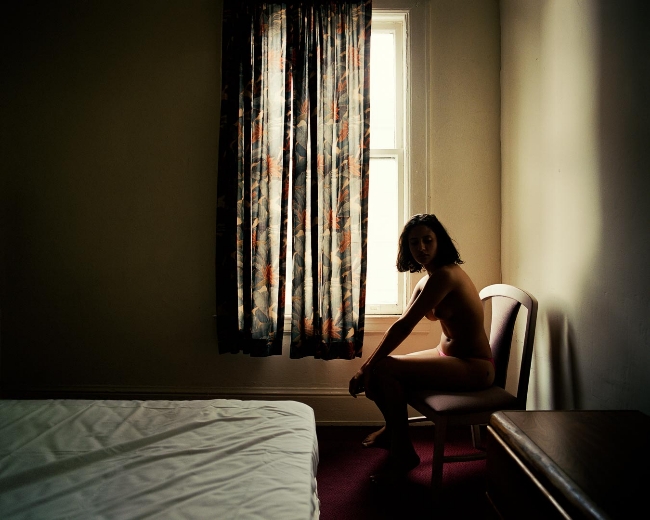
In addition to his usual equipment, Hido has added an old 126 Instamatic camera. Initially he used the camera to put the models at ease, but he found the harsh flash and the square format appealed to him and heightened the image’s air of amateurism. Although he hasn’t published those Instamatic portraits yet, he intends to in the future.
“I shoot like a documentarian,” Hido told one interviewer, “but I print like a painter.” He likes the subtle imprecision of darkroom work. He is also a strict and demanding editor of his own work. Hido estimates he exhibits only about one half of a percent of all the exposures he shoots.
There is an odd and precarious balance to most of Hido’s work. It emphasizes elements of alienation and remoteness, yet it also reveals a sort of resolve to struggle against those elements. Yes, the night is dark and threatening, but there is a light inside that offers some protection. Yes, it is cold and wet and miserable outside, but we are inside and shielded from the worst of nature’s elements. Yes, the room is drab and shabby, but there is someone here who can offer at least some temporary comfort. In all of Hido’s work, there seems to be an attempt to hold back the darkness, whether that darkness is physical, psychological or emotional.
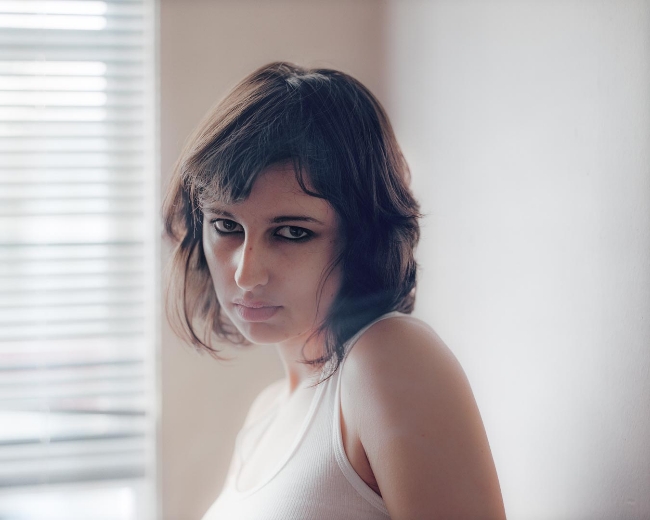
I confess, when I first saw Todd Hido’s photography I was somewhat underwhelmed by it. I found it visually interesting, but not very powerful. The more I looked it, however, the more I began to appreciate the subtlety of his work. There is something poetic in his photographs, something that manages to be both universal and yet anonymous. His houses are ordinary houses, his landscapes are ordinary landscapes, and his people are ordinary people. And if they appear alienated from their surroundings, they are not alienated from us.
And that, I believe, is the real appeal to Todd Hido’s work. He draws the viewer into the image as an active participant. We are outside those houses, wanting to get inside. We are detached from the people, wanting to bridge that emotional divide and make some sort of connection. If at first glance your reaction to his work is cold, it’s because that’s the reaction Hido is after. If you’re cold, you want to seek the warmth; Todd Hido’s photos offer the promise of warmth.
